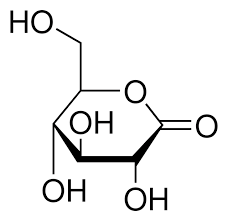D-Gluconolactone

Product Description
D-Gluconolactone, a naturally occurring substance derived from glucose oxidation, serves multiple purposes across various industries, thanks to its unique properties.
Product:
D-Gluconolactone
CAS:
90-80-2
Synonym:
D-glucono-1,5-lactone; Gluconic acid lactone
Structure:

Typical Characteristics
Appearance
White to off-white powder
Density
1.610 g/cm3
Melting point
155 °C (decomposes)
Molecular Weight
178.14
Odor
Odorless
Purity
≥99.0%
Refractive index
1.625
Uses, Applications & Markets
Key applications
get a quote
We Offer D-Gluconolactone
in various grades
A few of the grades available are listed below:



D-Gluconolactone used in many
industry applications
D-Gluconolactone, a naturally occurring substance derived from glucose oxidation, serves multiple purposes across various industries, thanks to its unique properties. Here are some of its key applications:
- Food Industry: Used as a food additive for its ability to improve flavor, stabilize, and act as a preservative. It enhances the quality and shelf life of perishable foods and beverages.
- Pharmaceuticals: Incorporated into medications as an excipient to stabilize formulations and improve their bioavailability. It's particularly beneficial in the production of time-release pills.
- Cosmetics and Personal Care: Due to its gentle acidifying properties, it is a common ingredient in skincare products, promoting skin renewal and improving texture by gently exfoliating the skin surface.
- Biodegradable Polymers: It serves as a monomer in the synthesis of biodegradable and biocompatible polymers, contributing to environmentally friendly materials for medical applications such as sutures and implants.
- Water Treatment: Utilized in water treatment facilities to remove metal ions through chelation, improving water quality and safety for consumption.
- Photography: Employed in photographic chemical solutions as a buffering agent to maintain the required pH for the development process.
- Agriculture: Used as a plant growth regulator and nutrient absorber, enhancing the health and yield of crops.